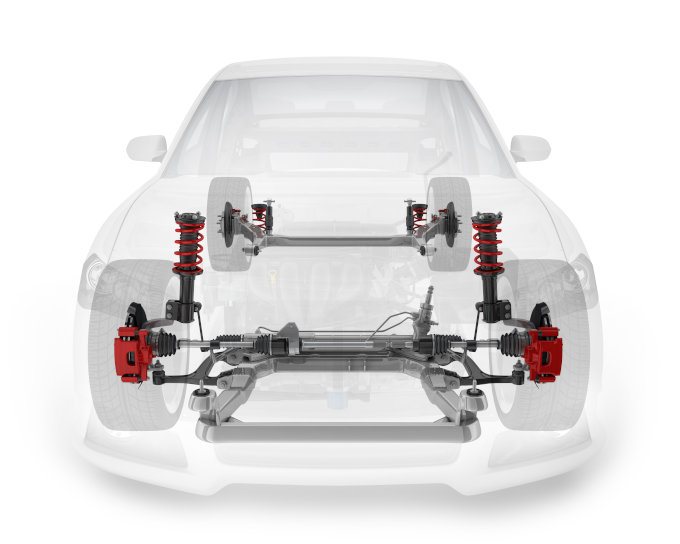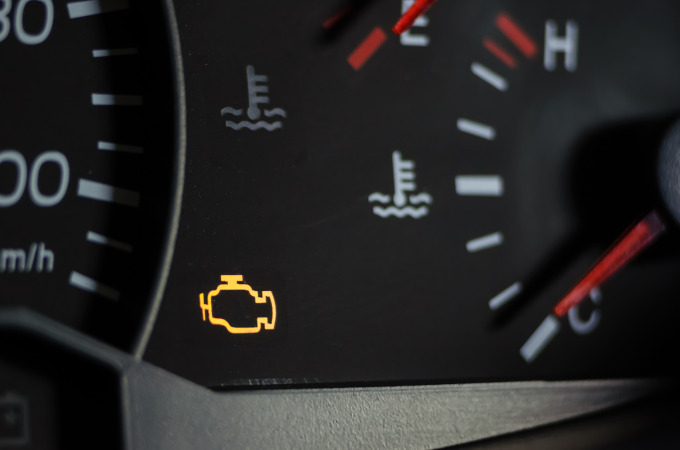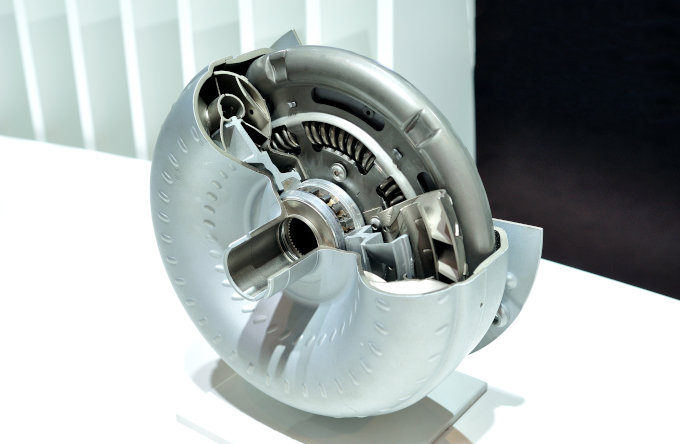Engines aren’t the only thing that can overheat in your vehicle; your transmission can also overheat, leading to problems and expensive repairs. You could opt for an automatic transmission cooler to help prevent the possibility of your transmission overheating. But are they worth it?
That depends on a few factors. If you live in a warmer climate, your lifestyle or job requires you to tow heavy loads, or you are consistently in stop-and-go traffic, a transmission cooler may be an excellent addition to your vehicle. It can give better, more consistent vehicle performance and extend your transmission's life and health.
In this article, we will break down everything you need to know about automatic transmission coolers.
- How they work
- Types of transmission coolers
- Benefits they offer
- Installation
How Do Automatic Transmission Coolers Work?
In general, automatic transmission coolers create additional surface area to cool transmission fluid as it moves from the transmission to the radiator and back to the transmission.
Fluid heated by the transmission flows to the transmission cooler, which then goes through a series of fins or plates. Air flowing over the transmission cooler fins dissipates the heat and further cools the transmission fluid moving through the fins. The cooled fluid is then routed back through the transmission via the return line, maintaining a lower temperature.
Types of Automatic Transmission Coolers
Though the basic principles remain the same, different types of coolers employ various methods to get the job done.
Tube And Fin Transmisison Cooler
This is one of the basic transmission coolers on the market. As the name suggests, two main components are present in the tube and fin coolers. The tube allows the fluid to spread and flow through thin metal fins. Then the heat present in the fluid is absorbed by the air flowing around the fins.
Other than the two main components, there is another instrument called the Turbulator. The Turbulator agitates the fluid when it flows through the tube, and the agitation helps increase the heat dispersion through the fins, thus increasing the efficiency. You should mount the cooler between the grille and the A/C condenser for maximum efficiency.
This unit is one of the most cost-effective coolers on the market and the easiest to install.
Plate And Fin Transmision Cooler
This is somewhat similar to the tube and fin cooler. Instead of tubes, you have an aluminum plate, and the fluid flows spread throughout the plate. Compared to a tube, the increased surface area provides greater cooling, and the fluid can circulate at a higher rate. This contributes to reducing the temperature of the transmission fluid. The cooler works best when installed between the radiator and the condenser. Though this is slightly more expensive than the tube-fin cooler, it is still an affordable choice. It is available in different sizes, and the effectiveness varies with the size. One of the problems with this cooler is that it is hard to install.
Stacked Plate Transmission Cooler
The technology used in the stacked plate cooler is similar to that used in the plate and fin cooler. The primary difference between the two coolers is the airflow and surface area the liquid gets.
Due to the capabilities of this specific cooler, this is a sought-after unit for racing, off-roading, and towing vehicles. To increase its efficiency, some units have integrated fans to increase airflow.
This cooler is exceptionally efficient, offers greater airflow, and is durable. However, it is also costly, and its sheer size poses installation challenges. To put this unit's efficiency in perspective, the stacked plate automatic transmission cooler is three times more efficient than the tube fin cooler.
Heat Sink Transmission Cooler
This type of transmission cooler is used most in everyday vehicles. Unlike other transmission coolers, this unit doesn’t rely on external airflow and uses a unique finned aluminum design to disperse the heat through the cooler's body.
It uses either single or dual fluid passages inside the cooler. The fluid's path is much longer, thus allowing the fluid to stay inside the cooler for an extended time. The increased time provides room for the liquid to cool down.
Since the cooler doesn’t rely on external sources to assist in cooling, it can be mounted just about anywhere. It is often installed in the frame rail close to the transmission to make the installation process convenient.
This unit is easy to install, affordable, and durable.
Benefits of an Automatic Transmission Cooler
Like the engine's optimal temperature range, the transmission has its optimum temperature. Ideally, your transmission temperature should be between 170F and 225F. An automatic transmission cooler helps you maintain this temperature, which has several benefits.
Increases Transmission Life Span
If you live in a warm climate, regularly drive through traffic, or haul heavy cargo, your transmission will surely spike over 200F. In such situations, adding a cooler will drop the temperature by 20 to 25 degrees, maintaining your transmission temperature in the 170F range. At this temperature, your transmission could last upwards of 100,000 miles.
Transmission Fluid Lasts Longer
Heat plays a prominent role in the state of the transmission fluid. When the fluid overheats, it starts to break down. This significantly reduces the fluid's ability to lubricate the transmission, which will further contribute to the deterioration of the transmission.
In severe cases, you could end up with burnt transmission fluid. The fluid condition reflects the performance and reliability of the transmission.
Installing an Automatic Transmission Cooler
Before installing a transmission, you need to figure out which transmission cooler best fits your needs. Once you find the ideal cooler, you can move toward the installation.
Different coolers are mounted in different regions of the car. We have already discussed the location in which each cooler is mounted. The orientation of the cooler does not matter, and it should not create any problems if it is in the correct position.
When mounting the cooler, the best way to do this is via a mounting kit. The kit comes with heavy-duty zip ties and spacers to prevent the cooler from coming into contact with the condenser.
Running the lines properly can be tricky. As it sits, the transmission fluid leaves the transmission, flows through the radiator, and re-enters the transmission. After you add the cooler, the fluid should leave the transmission, go through the radiator, and then go through the cooler before returning to the transmission.
After setting up the lines, ensure they are correctly fastened so there are no leaks. Finally, top up the transmission fluid to compensate for the void created by the cooler and hoses.
If this seems a bit confusing, you could always visit us at AAMCO Knoxville to get your automatic transmission cooler mounted.
Do You Need an Automatic Transmission Cooler?
As mentioned, it mainly depends on your driving habits and the climate where you live. You probably won’t need a transmission cooler if you live in Minnesota or Vermont. On the other hand, if you live in the southwest, a cooler would be a welcome—perhaps even required—addition to your ride.
But what if you were living in someplace like Knoxville, Tennessee? Knoxville summers can get hot, and stop-and-go traffic can be a risk factor for transmission overheating. Most importantly, you should consider getting a transmission cooler if you use your vehicle to tow boats, trailers, or other heavy loads for work or leisure.
Coolers Don’t Solve Existing Transmission Problems
Transmission coolers are used to prevent problems, not solve them. Take your vehicle to a transmission specialist immediately if you notice transmission problems, such as slipping, overheating, or other issues. Additionally, transmission coolers don’t allow you to skirt weight limits for towing. Overloading your vehicle can ruin your transmission or engine, and no amount of cooling can prevent that.
Conclusion
Keeping your transmission fluid at an optimum temperature, especially if you’re doing activities that involve towing heavy loads synch as boats or trailers, will extend the life of your transmission and help keep the need for repairs away.
Think a Transmission Cooler Is Right for You? We Can Help!
Have questions? AAMCO Knoxville sells, installs, and repairs automatic transmission coolers. If you’re having overheating issues or want to learn more about the automatic transmission coolers, schedule an appointment at our AAMCO Knoxville Center today!











